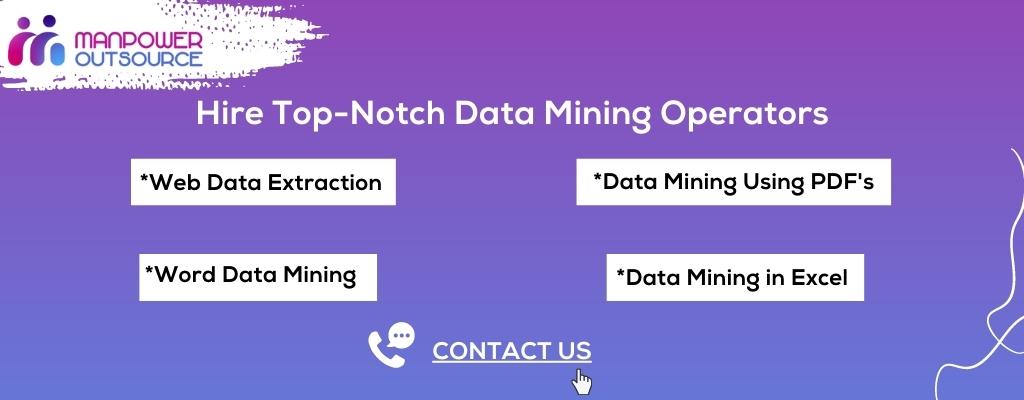Massive amounts of data are analyzed in the process of “mining” meaningful intelligence from them in order to assist enterprises in problem-solving, trend prediction, risk reduction, and opportunity discovery. Data mining is similar to actual mining in that both involve sifting through vast amounts of content in search of valuable resources and elements.
In order to address problems, data mining also entails building connections and identifying patterns, anomalies, and correlations, which results in the production of useful information. Data mining is a broad and diverse process with a variety of parts, some of which are even mistaken for data mining itself.
We will now examine the data mining procedures after learning more about what data mining is.
Data Mining Procedure
Let’s dissect the process data scientists and analysts use to approach a data mining project in order to answer the question, “What is data mining?”
1. Have business knowledge
What are the project’s goals, the company’s existing status, and what constitutes success?
2. Recognize the data
Determine the type of information required to address the problem, then obtain it from the appropriate sources.
3. Get the data ready
Fix duplicate, missing, or corrupted data issues before formatting the data in a way that will help you solve your business challenge.
4. Model the data
Algorithms can be used to identify data patterns. The model is developed, tested, and assessed by data scientists.
5. Assess the data
Determine whether and to what extent the outcomes produced by a specific model will assist in achieving the business objective or solving the issue. Finding the ideal algorithm sometimes involves going through several iterations, particularly if the data scientists don’t get it quite right the first time. Data mining algorithms might be looking around.
6. Implement the fix
Deliver the project’s findings to those in charge of making decisions.
We will now examine the advantages in order to deepen our understanding of what data mining is.
Data Mining Benefits
Gaining as many benefits as you can is critical because our world is data-centric and we live and work in it. In this complex information age, data mining gives us the tools to solve concerns and problems.
Benefits of data mining include:
- It aids businesses in obtaining accurate information.
- Compared to other data applications, it is a productive and affordable solution.
- Businesses can adapt their operations and production in a lucrative way.
- Both modern and antiquated systems are used in data mining.
- It aids businesses in making wise selections.
- It aids in identifying fraud and credit risks.
- Data mining makes it simple for data scientists to quickly evaluate massive amounts of data.

What Constraints Apply to Data Mining?
Everything, even data mining, is imperfect. The main problems with data mining are as follows:
Many data analytics solutions are difficult to use and are complicated. To effectively use the technologies, data scientists require the right training.
Speaking of the tools, based on the algorithms they use, different ones work with various sorts of data mining. Data analysts must therefore be careful to select the appropriate tools.
There is a chance that the information isn’t totally correct because data mining techniques aren’t perfect. If the dataset is not diverse, this problem is especially important.
Concerns about privacy arise because firms may sell the customer information they have collected to other companies and organizations.
Large databases are needed for data mining, which makes it challenging to handle.
Let’s examine the many types of data mining after discussing what it is and it’s pros and cons
Which Data Mining Tools are Available?
Use the appropriate tool for the right job, as engineers like to say. The following tools and methods offer data analysts a variety of data mining functionalities.
1. Machine Intelligence
AI systems replicate human intelligence by performing analytical tasks including learning, planning, problem-solving, and reasoning.
2. Learning Association Rules
Finding links between dataset variables is the goal of this group of techniques, commonly referred to as market basket analysis. For instance, association rule learning can identify the things that are regularly bought in tandem (e.g., a smartphone and a protective case).
3. Clustering
The clustering method divides datasets into a number of useful subclasses. Users can better understand the data’s natural structure or grouping thanks to the method.
4. Classification
This method designates specific dataset elements to various target classes or categories. For each case in the data, the objective is to create precise predictions inside the target class.
5. Analytics of Data
Professionals can assess digital data using the data analytics technique to produce actionable business intelligence.
6. Data Preparation and Cleaning
This process converts the data into a format that is ideal for further processing and analysis. A few preparation-related tasks include finding and eliminating errors as well as any duplicate or missing data.
7. Database Management
Businesses employ data warehousing, which is a sizable collection of company data, to aid in decision-making. For the majority of extensive data mining projects, warehousing is a fundamental and essential element.
8. Learning Machines
Similar to the AI method previously described, machine learning is a method of computer programming that uses statistical probability to give computers the capacity to learn without human guidance or manual programming.
9. Regression
Regression analysis can forecast a wide range of numerical values in areas like sales, stock prices, and even temperature. The ranges are based on details from a specific data source.
Rundown
When done properly, data mining benefits are huge and it enables to identify customer trends and create marketing plans that are successful in reducing expenses and increasing revenue.
The capacity to sort enormous data sets in order to evaluate information and predict future trends opens up more prospects for businesses across various industries, yet such abilities are difficult to come by. However, you can rely on data mining firms to obtain information or hire data mining experts from us to obtain a flexible solution that will aid in the expansion of your business.


